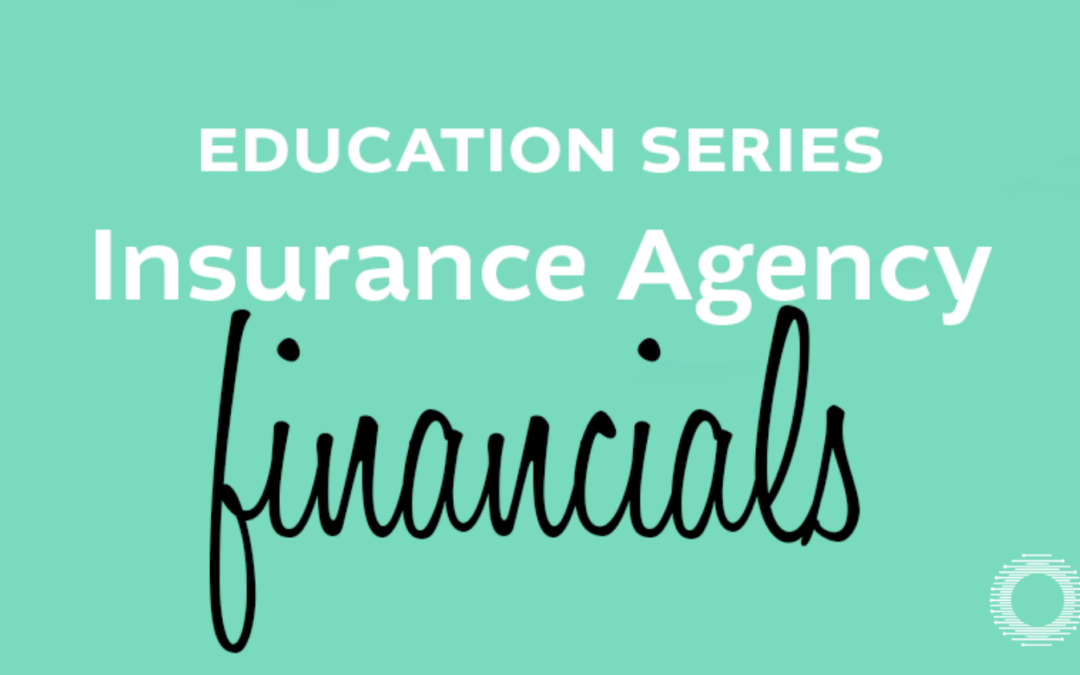Understanding financial statements is crucially important for insurance agency owners to run a successful business. We’ll break down the essentials of three major financial statements – the profit and loss statement, the balance sheet, and the statement of cash flows. As an insurance agency owner, knowing how to use these resources will empower you to make informed decisions, optimize performance, and ensure the financial health of your business.
Grasping the Profit and Loss Statement
The profit and loss statement, or the income statement, functions as your financial report card to compare revenue and expenses. It presents the money brought in, money spent, and net profit or loss over a specific period. The profit and loss statement can help you understand your revenue streams and expense trends, establish and track your agency budget, and see your net income for cash or tax planning purposes. Generally, this statement can be generated in a few different ways:
- Specific time period. This allows you to see the revenue and expenses within a defined period. This is typically displayed monthly, quarterly, annually, or year-to-date basis for your fiscal year.
- Comparison method. This view allows you to compare periods to review performance or notable changes in your revenue and expenses. Many bookkeeping programs will provide a comparison view for the same period one year prior or a comparison of year-to-date figures.
- Monthly detail view. Because revenue and expenses in your agency can be variable month to month, knowing the timing of when certain items are recognized can help you plan for variances in your agency for income and expenses. A monthly view summarizes the transactions for each month but displays them for the period you select. Usually, this is a trailing twelve months from the most recent month or a year-to-date view for all months in your fiscal year.
Understanding the Balance Sheet
Think of the balance sheet as a snapshot of your agency’s financial position at a specific point in time. It outlines your assets, liabilities, and equity. Understand the significance of a balanced equation: Assets = Liabilities + Equity. Know how your agency’s resources are financed and the role equity plays in representing the owner’s interest. Are you using debt or liabilities that were used to finance growth? Do you have a positive tangible net worth with retained earnings and cash reserves to cash flow growth investments?
By knowing important key financial ratios, you can calculate from the balance sheet valuable insights into agency cash management, short-term payables, long-term liabilities, and the tangible net worth of the business.
Navigating the Statement of Cash Flows
Cash is crucial, particularly for an insurance agency. The statement of cash flows reveals the movement of cash in and out of your agency. There are three main types of cash activities within a business: operating, investing, and financing activities. You can use the statement of cash flows to assess your agency’s liquidity and cash-generating abilities. Understanding the nuances of cash flow enables you to manage day-to-day operations efficiently and plan for future growth.
The reason a statement of cash flows is important is because financing activities or some forms of owner compensation may not be recognized in the net income of the profit and loss statement. Good account reconciliations provide the necessary transaction detail that allows you to track and see the effects of net income, operating expenses, financing activities, and any potential owner compensation represented by draws or distributions.
The Significance of Good Financial Statements for Your Insurance Agency
Do you have a way to easily retrieve and analyze these financial statements in your agency? Or a financial operations plan to gather and use these statements as part of your leadership plan?
These statements hold a significant role as tools for measuring performance, benchmarking, strategic planning, and achieving your goals as an owner of the company. Knowing your numbers helps you take ownership of what you manage and is part of the roadmap for knowing how you should manage within your agency.
It is recommended that the agency leadership review their financial statements and progress to goals at the minimum quarterly but recommended monthly. If you are able, it’s good practice to set up a regular cadence with your bookkeeper or accountant to collect these statements monthly so that you have them available.
A core part of our Fractional CFO service for insurance agencies is having a monthly meeting to review your financial statements and progress to goals we establish together.
What does a Chief Financial Officer do?
The role of the Chief Financial Officer is to manage the financial operations of the agency. This often includes tracking cash flow, financial analysis and planning, as well as an organizational strategy for optimizing financial goals. Growing agencies may not be at the stage of needing a full-time staff controller or CFO but can still benefit from CFO-level strategy during periods of growth or oversight for financial operations.
A Fractional CFO provides executive level resources and experience for growing agencies. Having a Fractional CFO within your agency will help utilize these financial statements and resources to report and support the agency’s key performance indicators (KPIs). An effective Fractional CFO for insurance agencies empowers owners to dedicate more of their time where it’s valuable and provides confidence in quick and effective financial decision making.


Recent Comments